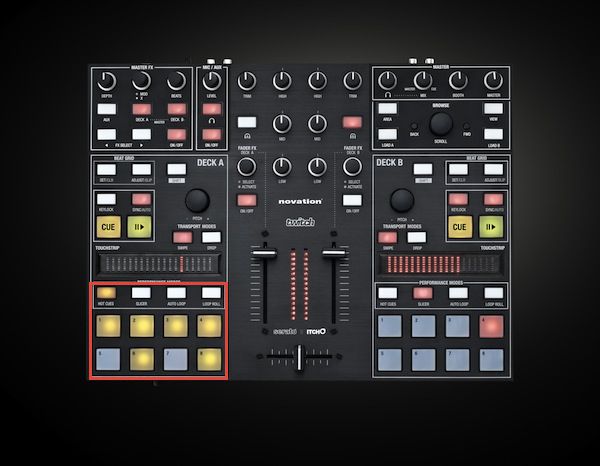
The most powerful use of Slicer can be in just adding occasional fills to a track every so often. People like to dance to steady beat, and if you’re chopping up entire tracks constantly with Slicer, you’ll most likely lose them.

With some seriously advanced MIDI mapping facilities in SDJ, it could be possible to make that illumination work with a non-supported controller, but any long-term Serato user knows that they shouldn’t hold their breath for ‘seriously advanced MIDI mapping facilities’ to show up anytime soon. Even with the massive waveforms on display in SDJ’s Extended view mode, it would be a real challenge to keep on top of that playhead location without that visual cue from the hardware. On supported hardware, the pad which is currently playing is illuminated – you can see exactly where in the Slicer region your playhead is. The length of those loops is an adjustable parameter. The basic premise of Slicer is that it separates a certain region of a playing track, be that 4, 8, or 16 beats, into 8 equal parts the slices, which will loop when you press them. HOW THE SLICER WORKS Slicer Mode on the DDJ-SX’s pads Hopefully in the future we’ll see a wider choice of hardware designed to enable Slicer mode for DVS users, and at more affordable price points. Plus, Serato don’t allow the use of multiple native devices (those which include audio interfaces), so at this time the only way a DVS user can get their fingers on some Slicer pads is to purchase the Pioneer DDJ-SP1 ( available in the DJTT Store here) no small investment, especially if you have other kit which already covers the rest of the features which that unit offers.

None of the Rane range of Serato native mixers support Slicer at all even the Rane 64 which was designed to work solely with SDJ.

When SDJ was ‘controller only’, that wasn’t too much of an issue, but with vast swathes of existing Scratch Live DVS users being transitioned to SDJ, many of them may find themselves disappointed that they have no way to incorporate Slicer into their existing setup without an extra hardware investment. The problem is, that like much else in SDJ, the slicer is not MIDI mappable – so unless you own a controller which supports it, you’re out of luck. Now the technology has been incorporated into SDJ, and the bulk of new native controllers include it as a standard feature.
#Novation twitch dj controller tutorial software
In many ways, the Slicer mode found in Serato DJ (SDJ) serves to highlight both the strength and the weakness of Serato’s locked-down software platform.įirst debuted in their older Itch software with the launch of Novation’s (at the time) innovative Twitch controller in 2011, it took a while for more Slicer capable all-in-one controllers to hit the market. HISTORY OF SLICER Slicer was originally introduced in tandem with the Novation Twitch Watch today’s tutorial for some great techniques on using the Slicer in a DJ mix. Now, every Serato user has access to the function in Serato DJ – but like many advanced features it takes a bit of work to figure out when to actually use it.

Being able to dynamically jump around within a playing track was a major innovation that Serato introduced back in ITCH.


 0 kommentar(er)
0 kommentar(er)
